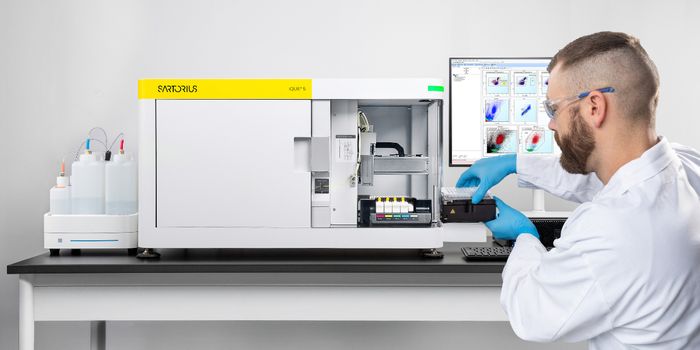The cancerous fear of circular extrachromosomal DNA
New research published in Nature suggests that ring-shaped extrachromosomal DNA (ecDNA) is particularly abundant in tumor cells and plays a malicious role in the evolution of cancer. This research comes from investigators collaborating from the University of California San Diego, the UC San Diego branch of the Ludwig Institute for Cancer Research, Stanford University and the Howard Hughes Medical Institute.
We all know that DNA encodes information in its sequences – remember, A, C, G, T? But DNA also encodes information in its shape. Interestingly, ecDNA, which refers to any DNA that is not on the chromosomes, be it inside or outside of a cell nucleus, differs structurally from that of DNA. That is noteworthy, says co-author of the study Paul S. Mischel, MD. "This is a paradigm shift. The shape of cancer ecDNA is different than normal DNA, and that has really important implications, both for our understanding of cancer biology and clinical impact.” Mischel is a professor in the UC San Diego School of Medicine Department of Pathology and a member of the Ludwig Institute.
The researchers relied on several different advanced tools to conduct their study, including ultrastructural electron microscopy, long-range optical mapping and computational analysis of whole-genome sequencing. These technologies allowed them to determine how the shape of ecDNA affects function on an epigenetic level.
They discovered that circular ecDNA in cancer allows for more accessibility than normal DNA, meaning, similar to the structure of bacteria, genetic information can be rapidly transcribed and expressed. When it comes to cancer, this is a frightening feature because tumor cells can grow dangerously quickly and respond faster to their changing environment and potential threats.
"By showing that ecDNA is circular, then elucidating its epigenetic organization, we demonstrate something very powerful," said Mischel. "This unique shape in human cancer cells is quite unlike normal human DNA. It really shines a new light onto the 3D organization of the screwed-up cancer genome and epigenome, which now provides a mechanistic basis for understanding why certain tumor cells are so aggressive."
The biggest take-away from this research is that cancer cells are inherently distinct in their propagation in comparison to eukaryotic cells. As Science Daily details, “Rather than passing DNA to subsequent generations by dividing into genetically identical daughter cells -- a process called mitosis, involving paired chromosomes that divide and used by all eukaryotes -- bacteria and cancer propagate by parceling out ecDNA to daughter cells in a seemingly random way, providing a mechanism by which certain daughter cells could receive multiple cancerous copies within one cell division. It is a distinctly different process of inheritance which allows for more rapid evolution and genetic change.”
Sources: Nature, Science Daily









